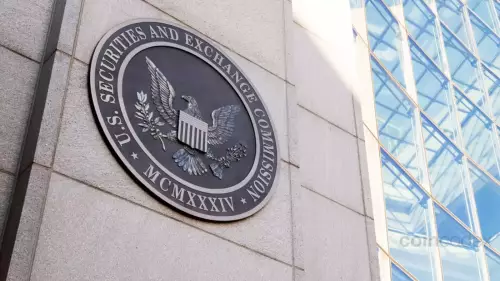 |
|
 |
|
 |
|
 |
|
 |
|
 |
|
 |
|
 |
|
 |
|
 |
|
 |
|
 |
|
 |
|
 |
|
 |
|
Cryptocurrency News Articles
Crypto Lending, Institutional Credit, and Blockchain Infrastructure: Bridging the Gap
Sep 29, 2025 at 05:13 pm
Exploring the convergence of crypto lending, institutional credit, and blockchain infrastructure, highlighting key trends and insights for institutional adoption.

Crypto Lending, Institutional Credit, and Blockchain Infrastructure: Bridging the Gap
The crypto landscape is evolving, with institutional interest in crypto lending growing. The convergence of crypto lending, institutional credit, and robust blockchain infrastructure is key to unlocking mainstream adoption. Let's dive into the key developments.
Institutional Credit Enters the Crypto Lending Arena
Traditional finance is taking notice of crypto's potential. Maple Finance and Elwood Technologies are collaborating to ease institutional entry into digital asset credit markets. This partnership links Maple’s on-chain lending platform with Elwood’s risk management tools, creating a familiar framework for professional investors.
Maple and Elwood: A Gateway for Institutional Capital
Maple and Elwood's collaboration addresses a major hurdle: fragmented infrastructure. By combining Maple's lending expertise with Elwood's institutional trading systems, they aim to create a seamless gateway for institutional capital into the decentralized economy. This is in line with the increasing demand for tokenized credit and fixed-income products, as seen with Ripple and Credbull's initiatives.
DeFi Lending Platforms: A Practical Approach
Platforms like Aave and Compound offer practical ways to utilize digital assets through decentralized finance (DeFi). These platforms connect lenders and borrowers directly on the blockchain, enabling users to earn interest by supplying assets to liquidity pools.
Understanding Aave and Compound
Aave and Compound operate through smart contracts, ensuring transparency and automation. Lenders deposit assets into pools, and borrowers draw from these pools by posting collateral. Interest rates are algorithmically determined based on supply and demand.
Layer-3 Networks: The Missing Link
While Layer-2 (L2) networks have improved blockchain scalability, they've also introduced coordination and governance challenges. Layer-3 (L3) networks, like Orbs, aim to address these issues by providing a decentralized service layer that enhances interoperability and governance.
Orbs: Enhancing Interoperability and Governance
Orbs acts as a generalized computing layer, facilitating seamless interoperability between different blockchains. It also offers a superior governance model, relying on a network of validators (Guardians) who vote on behalf of the community. This addresses the centralization issues often seen in token-weighted voting systems.
Looking Ahead: A More Interconnected Future
The evolution of blockchain infrastructure, particularly the emergence of Layer-3 networks, is paving the way for a more interconnected and collaborative Web3 ecosystem. By addressing issues such as coordination, governance, and data integration, these networks are essential for the continued growth and adoption of crypto lending and institutional credit.
Final Thoughts
The intersection of crypto lending, institutional credit, and blockchain infrastructure is dynamic and full of potential. As institutions become more involved and infrastructure continues to evolve, we can expect to see further integration and innovation in the digital asset space. Keep your eyes peeled – the future of finance is unfolding right before us, and it's looking pretty darn interesting!
Disclaimer:info@kdj.com
The information provided is not trading advice. kdj.com does not assume any responsibility for any investments made based on the information provided in this article. Cryptocurrencies are highly volatile and it is highly recommended that you invest with caution after thorough research!
If you believe that the content used on this website infringes your copyright, please contact us immediately (info@kdj.com) and we will delete it promptly.






























































